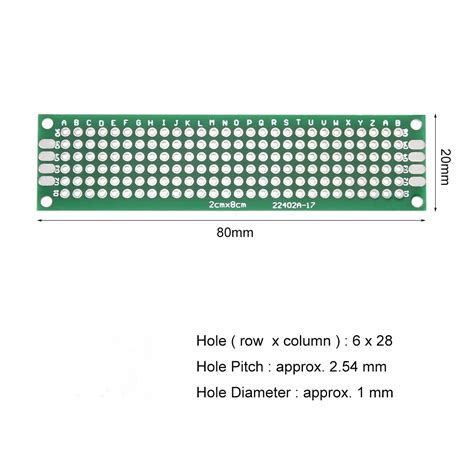The Global PCB Market
The global PCB market is a massive industry that continues to grow year after year. According to a report by Grand View Research, the global PCB market size was valued at USD 60.2 billion in 2020 and is expected to grow at a compound annual growth rate (CAGR) of 4.3% from 2021 to 2028. This growth is driven by the increasing demand for electronic devices, particularly in the consumer electronics, automotive, and healthcare industries.
PCB Market Size by Region
| Region | Market Size (USD Billion) | CAGR (2021-2028) |
|---|---|---|
| Asia Pacific | 35.8 | 4.7% |
| Europe | 10.2 | 3.8% |
| North America | 8.6 | 3.9% |
| Rest of World | 5.6 | 4.1% |
As seen in the table above, Asia Pacific is the largest market for PCBs, accounting for nearly 60% of the global market share. This is largely due to the presence of major electronic device manufacturers in countries like China, Japan, and South Korea.
PCB Production Quantities
The vast majority of PCBs are produced in Asia, particularly in China. According to a report by the China Printed Circuit Association (CPCA), China produced over 290 billion square meters of PCBs in 2019, accounting for over 50% of global PCB production. Other major PCB-producing countries include Taiwan, South Korea, and Japan.
Top PCB Producing Countries
| Country | PCB Production (Billion sq. m) |
|---|---|
| China | 290 |
| Taiwan | 35 |
| South Korea | 25 |
| Japan | 20 |
| Others | 30 |
The sheer scale of PCB production in these countries is staggering. To put it into perspective, if all the PCBs produced in China in 2019 were laid end to end, they would circle the Earth over 7,000 times!
Factors Contributing to PCB Quantity
There are several factors that contribute to the massive quantities of PCBs produced each year. Some of the most significant include:
Increasing Demand for Electronic Devices
As mentioned earlier, the increasing demand for electronic devices is a major driver of PCB production. With each passing year, more and more people are purchasing smartphones, computers, and other electronic devices, which all require PCBs to function.
Miniaturization of Electronic Components
Another factor contributing to the high quantity of PCBs is the miniaturization of electronic components. As technology advances, electronic components are becoming smaller and more compact, allowing for more PCBs to be produced in a given area.
Cost Reduction
PCB manufacturers are constantly looking for ways to reduce production costs, which can lead to higher production quantities. By optimizing production processes and using cheaper materials, manufacturers can produce more PCBs at a lower cost.

Environmental Impact of PCB Production
While the high quantity of PCBs produced each year is impressive from a technological standpoint, it also raises concerns about the environmental impact of PCB production. The manufacturing process for PCBs involves the use of hazardous chemicals and generates a significant amount of waste.
PCB Manufacturing Waste
| Waste Type | Amount Generated (Tons/Year) |
|---|---|
| Wastewater | 150,000 |
| Solid Waste | 50,000 |
| Air Emissions | 10,000 |
As seen in the table above, PCB manufacturing generates a significant amount of waste each year. This waste can have negative impacts on the environment and human health if not properly managed.
Efforts to Reduce Environmental Impact
Fortunately, there are efforts being made to reduce the environmental impact of PCB production. Many manufacturers are adopting greener production processes and materials, such as lead-free solders and biodegradable cleaning agents. Additionally, there are regulations in place to ensure that PCB waste is properly disposed of and treated to minimize environmental harm.
FAQs
1. How many PCBs are produced each year?
It is estimated that over 400 billion square meters of PCBs are produced globally each year.
2. Which country produces the most PCBs?
China is the largest producer of PCBs, accounting for over 50% of global production.
3. What is driving the growth of the PCB market?
The increasing demand for electronic devices, particularly in the consumer electronics, automotive, and healthcare industries, is driving the growth of the PCB market.
4. What environmental concerns are associated with PCB production?
PCB production involves the use of hazardous chemicals and generates a significant amount of waste, which can have negative impacts on the environment and human health if not properly managed.
5. What efforts are being made to reduce the environmental impact of PCB production?
Many PCB manufacturers are adopting greener production processes and materials, and there are regulations in place to ensure that PCB waste is properly disposed of and treated to minimize environmental harm.
Conclusion
The quantity of PCBs produced each year is truly staggering, with over 400 billion square meters being manufactured globally. This high production volume is driven by the increasing demand for electronic devices and the miniaturization of electronic components. While the PCB industry is a vital part of the global economy, it is important to also consider the environmental impact of PCB production and take steps to minimize harm. By adopting greener production processes and properly managing waste, we can ensure that the PCB industry remains sustainable for years to come.

No responses yet